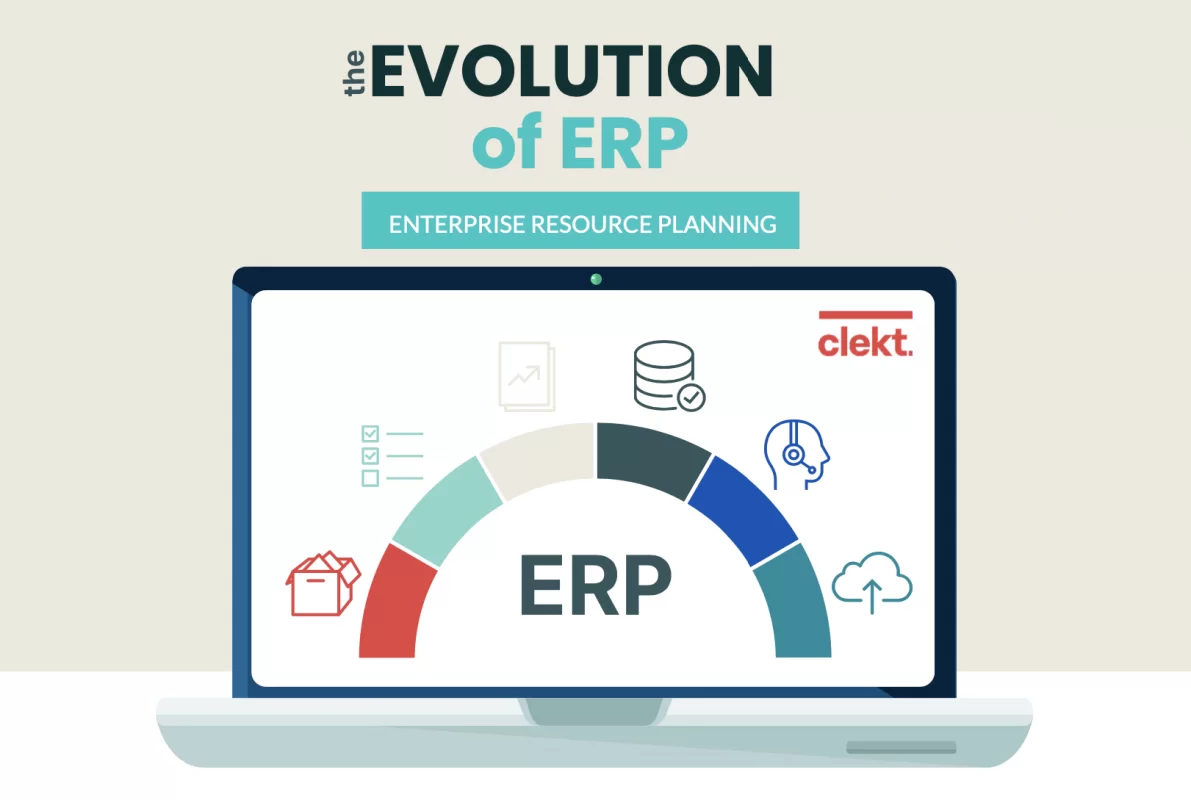ERP System Evolution & How This Can Help You.
Enterprise Resource Planning systems, or ERPs have evolved over decades into the form we know and work with today. Initially a basic inventory management solution, now combining many operational functions of a business, their full breadth of capability is best understood by seeing the stages of evolution ERPs have experienced. And the various functions tied in with the software powerhouse intrinsic to retail businesses worldwide. Here is our break down of ERP system evolution in an easy to digest form.

IC Software (1960s)
Inventory Control Software
Developed independently by enterprise-level manufacturing businesses to track inventory and plan procurement schedules. Generally based on legacy software and systems.
MRP Software (1970s)
Material Requirements Planning Software
A software solution coordinating the various aspects of production & procurement for greater manufacturing efficiency and optimised spend on raw materials. Monitoring stocks and demand leading to the automated completion of procurement proposals. Stating what is needed, how much and when.
MRP II (1980s)
Manufacturing Resource Planning Software
Growing out of the original MRP software function these systems had an emphasis on creating and producing production reports that could easily be used to make high-level business decisions. Providing information useful to all functional areas of a business including sales, marketing, finance and HR.
ERP Software (1990s)
Enterprise Resource Planning Software
The first multi-module application software system. Offering end-to-end integration across many, sometimes all departments, supporting functions of daily operations. Restricted to use within larger corporations at this time due to the high costs of implementation.
ERP II (2000s)
Extended ERP Supporting Web Functionality
This phase of ERP’s evolution saw the birth and transition from store to online shopping, with ERP providing the components of product, stock and distribution. Solutions also became more conversant with 3rd party offerings. CRM packages, for example, when integrated, generating better understanding of consumer demand when creating production schedules. Technological advancements including the bidirectional accessing of information from mobile and web devices.
Cloud ERP (2010s)
Cloud ERP
Online functionality became ever more sophisticated and modular. This led to virtual stock pools, multiple distribution points, sub day delivery, real time global pricing and far more JIT style processes and decision making. The evolution of Cloud ERP systems allows for the adoption of the Software as a Service (SaaS) model. Providing remote delivery of system functionality and lowering the cost-to-entry for mid-sized businesses, opening the functionality to a much wider scale of businesses.
ERP System Evolution in Your Business – We Can Help You Evolve
Data flowing through todays ERP systems is easily leveraged, releasing its intrinsic commercial value. We are experts in ERP integration, helping our customers make strident commercial gains though access to near real-time data throughout the entirety of their enterprise. Become data-first. Get in touch to discuss how we can help you.
ERP Evolution Infographic 



